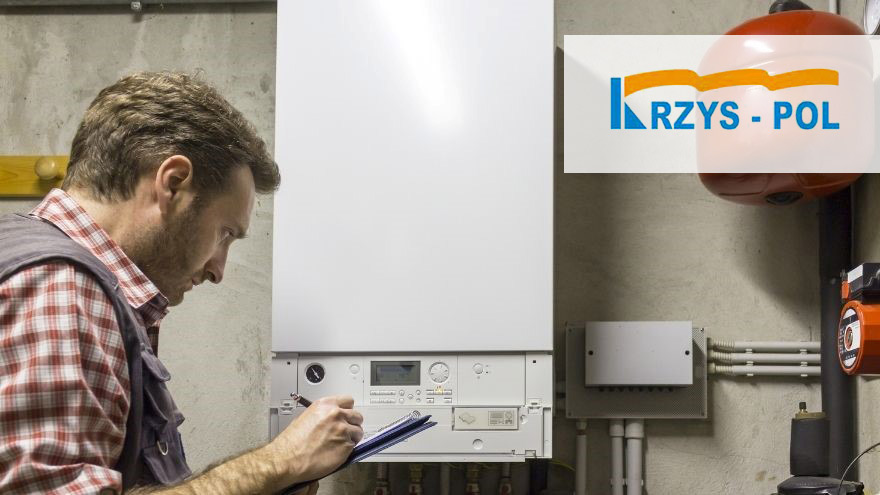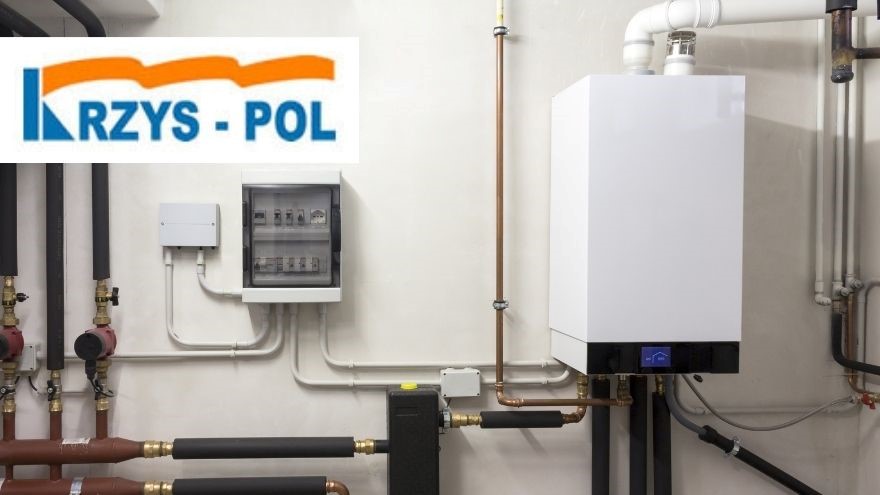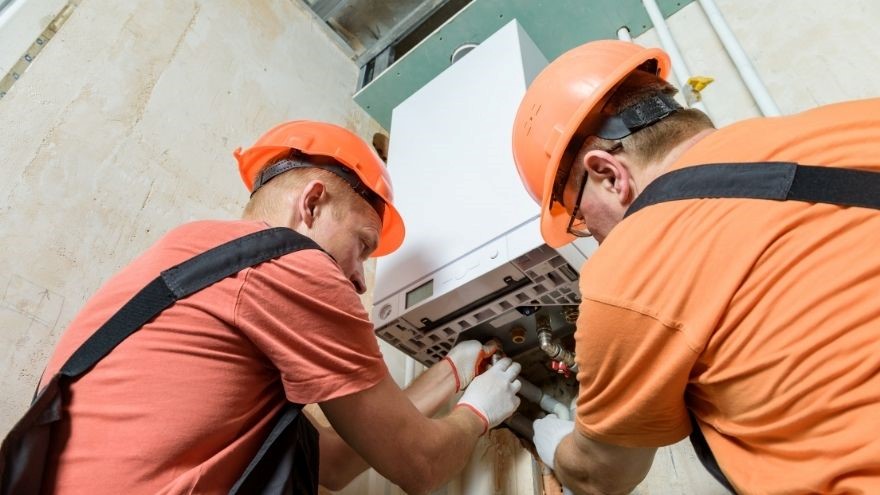A condensing boiler guarantees greater efficiency and, consequently, lower gas consumption than a traditional furnace. To use it safely, however, it is necessary to create an appropriate air-combustion system that will, among other things, ensure convenient and effective removal of harmful substances to the outside. Its basis is, of course, high-quality pipes. What should you consider when purchasing them?

From this article you will learn:
- what to pay attention to when choosing flue pipes for condensing boilers,
- what diameter should the exhaust pipe be,
- how to create an exhaust gas discharge system using Krzys-Pol products.
Check the pipes for condensing boilers from Krzys-Pol
What should you pay attention to when choosing a pipe for a condensing furnace?
To answer the question of what parameters flue pipes for condensing gas boilers should have, you must first understand how this type of devices work. They are one of the most convenient solutions in everyday use, because their operation comes down to setting the temperature and periodic schedule. Afterwards, the stove works completely independently. For its operation to run smoothly, the boiler needs a reliable air-combustion system. What does it mean?
Condensing boilers require, above all, a constant supply of air. In their case, effective combustion requires a much larger amount of oxygen than in a traditional gas furnace. As the demand can be up to 30% higher, special blowers are used in these installations. They may take the form of additional aeration ducts or double-walled exhaust pipes leading from the boiler room to the outside.

If the flue pipe is to simultaneously supply air to the boiler, it must consist of two pipes. One of them is responsible for throwing exhaust gases outside the building, and the other ensures a continuous supply of oxygen to the furnace. However, it is not necessary to use this type of system. You can successfully replace it with two separate channels. Regardless of the choice, special attention should be paid to adapting the exhaust pipes to the specific operation of the condensing gas boiler.
Features of the flue pipe for a condensing boiler
In the process of gas combustion in condensing boilers, virtually no dangerous suspended dust or large amounts of harmful substances, such as benzoalphapyrene, are produced. Although the exhaust gases in this case are much less hazardous to the environment than those produced in solid fuel furnaces, they contain certain amounts of nitrogen, sulfur and carbon compounds.
The condensation process, which is facilitated by the relatively low exhaust gas temperature, should be added to this equation. As a result, substances formed during the combustion process combine with water deposited on the internal walls of the chimney, creating aggressive acids, such as sulfuric, nitric or carbonic acids. This is part of the so-called condensate, which threatens the durability of the cables. As you can easily deduce, chimney liners should be made of steel resistant to the above-mentioned substances.
Check pipes for condensing boilers from Krzys-Pol
The condensate deposited on the internal walls of exhaust pipes has a high pH, which significantly increases the risk of corrosion. It can - especially in the form of slots - quickly lead to leaks and damage to the chimney liner. In this case, dangerous gases could penetrate inside, and the condensate itself would soak into the walls, generating stains and unpleasant odors that are difficult to remove.
The material used to produce the exhaust pipe should be characterized by increased resistance to both corrosion and aggressive chemicals. These are the properties of acid-resistant stainless steel. Another factor that could damage the exhaust pipe is increased pressure. When choosing channels of this type, you should also pay attention to this parameter.
What is the pipe diameter for a condensing furnace?
The diameter of the exhaust pipes in boilers with a closed combustion chamber must be adapted to the specificity of the entire installation. A double-wall system will require different ducts and a distribution system, in which one duct is responsible for exhaust gas discharge and the other for air supply.
The most commonly used double-wall ducts are those with diameters of 80/125 (internal exhaust pipe 80 mm, external air pipe 125 mm). In the case of shorter chimneys, you can also find 60/100 variants. If we are talking about cables in the distribution system, they usually have a diameter of 80 mm.

A short flue pipe led above the roof is sufficient to ensure proper and safe operation of the furnace. If the power of the boiler installed in a detached family house does not exceed 21 W, the pipe can also be led out through the wall. Please remember that the outlet of such a cable must be at least 0.5 m from the facade and the same distance above the ground level (2.5 m if there is a children's playground or other recreational space within 8 m). You must also observe the required distance of 0.5 m from the edges of opening windows and avant-corps that could cover the outlet.
Its tightness level is also of great importance for the efficiency of the flue gas duct. For this reason, it must be adapted to work in overpressure. The same applies to the fittings used in the installation. Before purchasing them, make sure they have the appropriate markings.
Exchange benefits in the new OnnTop loyalty platform!
If you are installing a condensing boiler, be sure to check out the offer of our online wholesaler. Here you will find mainly the Krzys-Pol brand assortment, including high-quality exhaust gas pipes. They are made of acid-resistant stainless steel, making them perfect for installations with a closed combustion chamber.
The products available at Krzys-Pol include:
- Chimney pipe - a single-wall condensation pipe, equipped with a gasket and used in demanding heating systems. It will work perfectly in every case - regardless of whether the installation operates by gravity or uses forced exhaust gas flow (so-called turbo boiler).
- Chimney elbow – a fitting allowing for flexible routing of exhaust gas ducts, adapted to a condensing environment and compatible with both gravity systems and turbo boilers.
- Condensing tee – a fitting allowing for the creation of a side branch. Like the other elements of the installation, it is made of high-quality steel and adapted to difficult environmental conditions.
- Boiler umbrella - an element protecting the chimney against precipitation, used to support and stabilize the air draft.
- Roof plate – crowning the flue gas installation and equipped with a protective umbrella.
When installing a new gas boiler, be sure to ensure a reliable air-combustion system. All the elements necessary to perform this installation can be found in the comprehensive Krzys-Pol brand range, available at Onninen!
Do you have questions about the industry? Join the Świat Instalacji group!